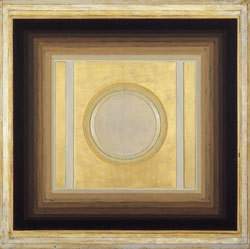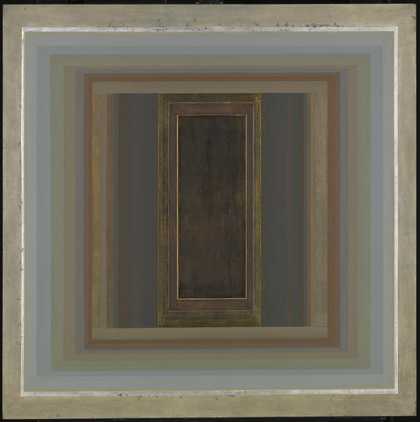
Paul Feiler Janicon LXXXVIII 2004
German-born painter Paul Feiler (born 1918) has always been concerned with the architecture of space and the ambiguity of our visual experiences. From the early 1950s, when he became known for his gestural abstractions inspired by the structure of natural forms, to his recent work expressing shrine-like portals, Feiler's paintings are sensitive constructions using space, tone and light, leading to simplification. This summer's exhibition explores the evolution of his ideas with paintings that span six decades of Feiler's career from 1953 to 2004.
Originally associated with the post-war Modernists in St Ives, by 1953, Feiler had moved permanently to Cornwall where he still resides. Inspired by the Cornish light and landscape, his painting during this and the following decade became influenced by Abstract Expressionism. However, his abstraction has consistently drawn on external sources, using light, tone and space to render an environment in pictorial terms. The earliest work on display, Mousehole v Paul, 1953, relates the experience of a particular event through simple structures, subtle tonal harmonies and a luxuriously active painted surface.
During the 1970's the character of Feiler's work changed dramatically. He began painting thinly glazed surfaces of mechanically organised geometric forms. Meditative paintings relating to recessive spaces and projecting forms developed from themes of 'the hidden' and 'the shrine'. Superimposed squares of closely gradated tone, latterly incorporating gold or silver leaf, have a quiet movement, the square and circle becoming the central motif. Feiler uses these spatial explorations of the horizontal and the vertical as a gateway for the viewer to make potent connections with the world as he makes it.
Feiler was born 1918, in Frankfurt am Main. He came to England in 1933 and studied from 1936 to 1939 at the Slade School. Interned in Canada at the outbreak of the Second World War, Feiler returned to Britain in 1941 to begin his career as an artist. From 1941- 1975 he taught art at the Combined Colleges of Eastbourne and Radley and West England College of Art. He currently lives and works in Newlyn, Cornwall.
An illustrated 48 page catalogue accompanies the exhibition, with an essay by the writer and curator Peter Khoroche.

